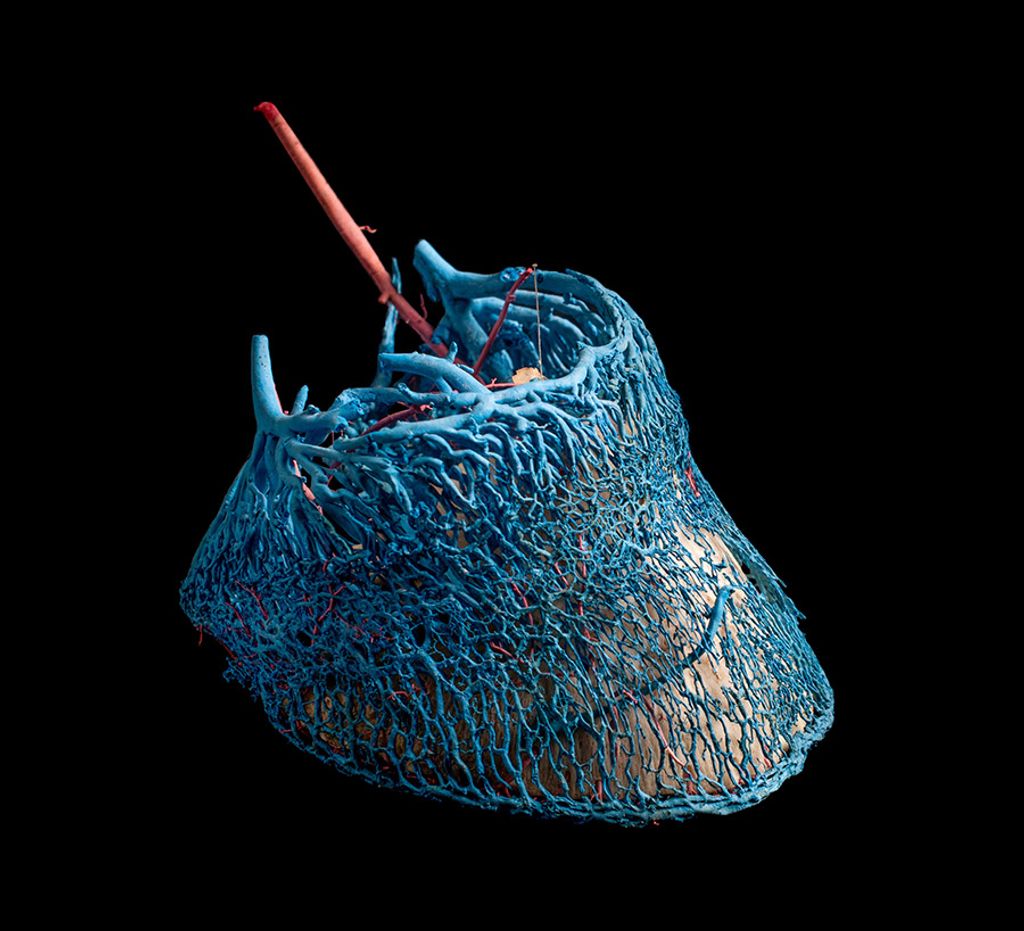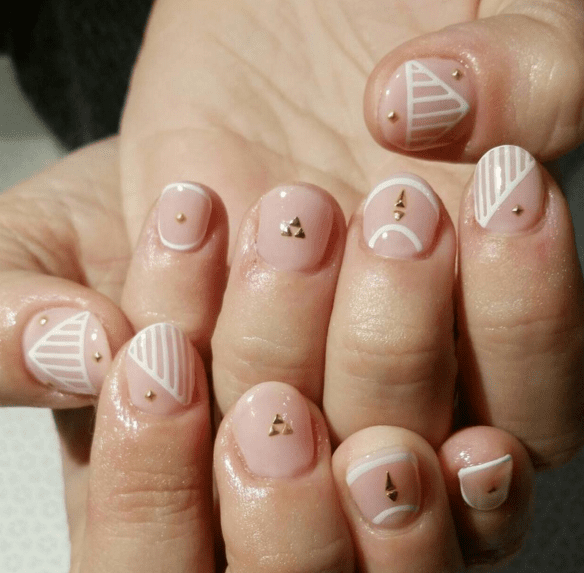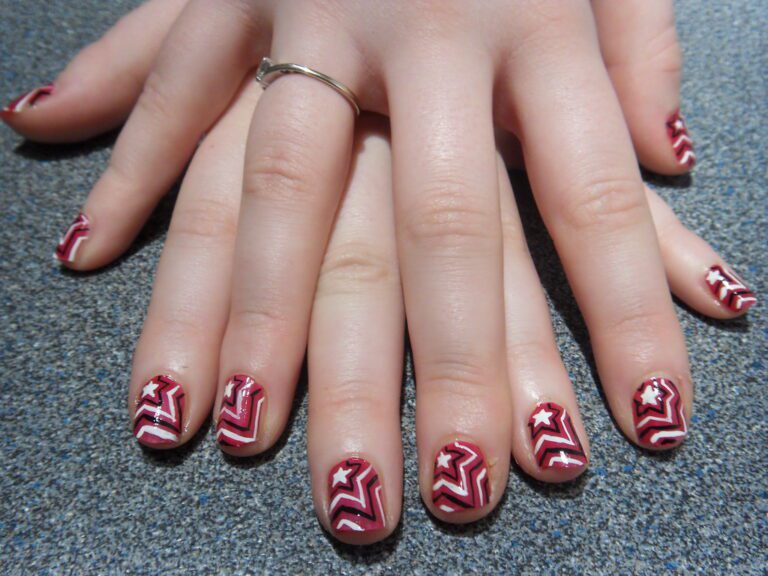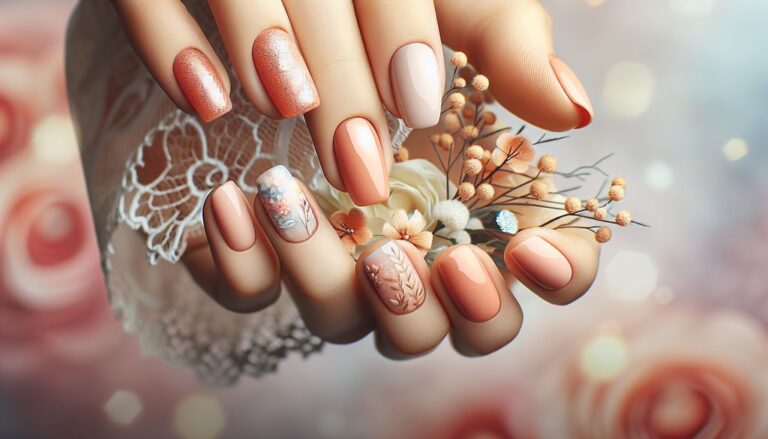“Growth Unleashed: The Secrets of How Nails Grow”
Deprecated: mb_convert_encoding(): Handling HTML entities via mbstring is deprecated; use htmlspecialchars, htmlentities, or mb_encode_numericentity/mb_decode_numericentity instead in /home/u654140373/domains/nailinspire.com/public_html/wp-content/plugins/kadence-pro/dist/elements/elements-init.php on line 1267
Deprecated: Function utf8_decode() is deprecated in /home/u654140373/domains/nailinspire.com/public_html/wp-content/plugins/kadence-pro/dist/elements/elements-init.php on line 1275
Nails are a fascinating aspect of human biology, and understanding the secrets of how they grow can lead to better nail care and maintenance. In this article, we will explore the biology of nail growth, the factors that influence nail growth, common myths about nail growth, caring for your nails, nail disorders and growth interruptions, and ways to enhance nail growth. By uncovering the science behind nail growth, we can unlock the potential for healthier, stronger nails.
Key Takeaways
- Nail growth is influenced by genetic factors, nutrition, age, and gender.
- Trimming nails does not affect the speed of nail growth; growth occurs at the nail matrix.
- Maintaining good nail hygiene and protecting nails from environmental damage are crucial for healthy nail growth.
- Fungal infections and trauma can disrupt the nail growth cycle and lead to nail disorders.
- Professional nail care, supplements, and innovative treatments can contribute to enhanced nail growth and overall nail health.
The Biology of Nail Growth

Understanding the Nail Structure
Nails are not just a canvas for color and artistry; they are complex structures with a crucial role in protecting the tips of our fingers and toes. The nail plate, the part of the nail that we can see, is made of several layers of hardened cells containing keratin, a type of protein that is also found in hair and skin.
Beneath the visible nail lies the nail bed, which is rich in blood vessels and nerves, providing the nail plate with nutrients and sensation. The nail matrix, located at the base of the nail under the cuticle, is where new nail cells are produced. As these cells grow and harden, they push the older nail cells forward, causing the nail to grow.
Proper understanding of nail structure is essential for both maintaining nail health and diagnosing nail disorders. Here are the key components of the nail:
- Nail Plate: The visible hard part of the nail
- Nail Bed: The skin beneath the nail plate
- Nail Matrix: The tissue under the cuticle responsible for nail growth
- Cuticle: The protective layer of skin at the base of the nail
- Lunula: The half-moon shaped area at the base of the nail, part of the nail matrix
Remember, healthy nails are an indicator of overall health. Paying attention to changes in your nails can help you detect health issues early.
The Role of the Nail Matrix
The nail matrix, situated under the skin behind the nail, is the crucial area where new nail cells are generated. These cells then harden and transform into the flat, hard plate that we recognize as the nail. Keratin, a type of protein, is the primary component of these cells, giving the nail its strength and resilience.
The health of the nail matrix is essential for the continuous growth of the nail. Any damage to this area can result in abnormalities in the nail, such as ridges or discoloration. Proper care and protection of the nail matrix are therefore vital.
Tip: To maintain a healthy nail matrix, keep your cuticles intact as they serve as a natural barrier against infections that could harm the nail matrix.
Factors such as blood supply and the balance of nutrients also play a significant role in the functioning of the nail matrix. A well-nourished nail matrix will produce strong and healthy nails, while a malnourished one can lead to weak and brittle nails.
Keratin: The Building Block of Nails
Keratin is the fundamental protein that constitutes the primary structure of nails. This fibrous structural protein is not only the cornerstone of nail formation but also plays a pivotal role in the health and resilience of hair and skin. The body synthesizes keratin by transforming amino acids into the tough, protective layers that make up the nail.
The production of keratin is a complex process that involves various vitamins and minerals. For instance, biotin, vitamin B12, and iron are crucial for the synthesis of healthy keratin. A deficiency in these nutrients can lead to weakened nail structure and slower growth rates.
- Proper nail care and nutrition are essential for maintaining keratin levels and ensuring strong nail growth. Here are some tips for supporting keratin production:
- Include biotin-rich foods in your diet, such as eggs, almonds, and whole grains.
- Stay hydrated to help maintain the moisture balance in your nails.
- Protect your nails from harsh chemicals and environmental stressors.
Remember, while external treatments can provide temporary benefits, the true key to robust nails lies in nurturing them from within through a balanced diet and healthy lifestyle choices.
Factors Influencing Nail Growth

Genetic Determinants of Nail Growth
The rate at which our nails grow is not solely a matter of routine care; it is deeply rooted in our genetic makeup. Certain genes are responsible for the regulation of nail growth, making this process a highly individualized phenomenon. For instance, some people may find that their nails grow quickly and evenly, while others experience slower growth and increased brittleness.
- Genetics play a pivotal role in determining the speed and quality of nail growth.
- Variations in nail growth can be observed not only between different individuals but also among different populations.
Tip: While you cannot change your genetic predisposition, maintaining a balanced diet and proper nail care can optimize your nail health.
Understanding the genetic factors involved in nail growth can help individuals set realistic expectations for their nail care routine and seek appropriate treatments when necessary.
The Impact of Nutrition on Nail Health
The health of your nails is significantly influenced by the nutrients you consume. A diet rich in vitamins, minerals, and proteins is essential for maintaining strong and resilient nails. For instance, biotin, a B-vitamin, is known for its role in promoting nail strength and preventing splitting. Similarly, iron is crucial to prevent brittle nails, while omega-3 fatty acids contribute to their moisture and flexibility.
Essential nutrients for nail health include:
- Biotin (Vitamin B7)
- Iron
- Zinc
- Vitamin C
- Omega-3 fatty acids
Incorporating a variety of nutrient-dense foods into your diet can support nail growth and prevent common issues such as brittleness or discoloration. Foods like lean meats, leafy greens, nuts, and seeds are excellent sources of these vital nutrients.
Tip: A balanced diet not only benefits your nails but also has a positive impact on your overall health. Remember, supplements should never replace a healthy diet but can be used to address specific deficiencies.
How Age and Gender Affect Nail Growth
As we age, the rate of nail growth tends to slow down. Additionally, gender differences can also play a role in nail growth, with hormonal changes affecting the rate of growth. For example, hormonal changes during pregnancy can lead to changes in nail growth patterns. Here are some factors that influence nail growth:
Common Myths About Nail Growth

Debunking the Myth of Gelatin Supplements
The belief that consuming gelatin supplements can significantly enhance nail growth is widespread, yet scientific evidence does not support this claim. Gelatin is a protein derived from collagen, which is indeed a component of the nail. However, the direct correlation between gelatin intake and improved nail strength or growth is a misconception.
While gelatin contains amino acids that are the building blocks of proteins, the body does not necessarily utilize these specific amino acids to strengthen or grow nails. In fact, a balanced diet with adequate protein intake is generally sufficient for maintaining healthy nails. Moreover, the body prioritizes essential physiological functions over nail growth when distributing nutrients.
Tip: For healthy nails, focus on a well-rounded diet rich in proteins, vitamins, and minerals rather than relying on gelatin supplements.
It’s important to approach nail care with a holistic perspective, understanding that no single supplement is a magic solution. Consistent care and attention to overall health are key to maintaining strong and healthy nails.
Trimming Nails for Faster Growth: Fact or Fiction?
The belief that trimming nails encourages faster growth is widespread, but does it hold any scientific merit? The truth is, regular trimming does not directly cause nails to grow more quickly. However, it does play a crucial role in maintaining nail health and preventing breakage, which can give the appearance of faster growth.
- Trimming keeps the nails free from splits and jagged edges, reducing the likelihood of snags and tears.
- Maintaining a consistent length and shape helps to protect the nail tip, which is the most vulnerable part of the nail.
- A well-groomed nail is less prone to damage, allowing the nail to grow to its full potential without setbacks.
Tip: To promote healthy nail growth, focus on a balanced diet and proper nail care rather than the frequency of trimming.
While the act of cutting doesn’t speed up the nail growth process, it is an essential aspect of nail care. By preventing damage and maintaining a clean shape, trimming contributes to the overall conditions that favor steady nail growth.
The Truth About Nail Growth and Moon Cycles
The idea that the lunar cycle can influence the growth of nails is a fascinating concept that has been around for centuries. Some believe that, much like the tides, human biology is somehow synced with the phases of the moon, affecting how our nails grow. However, scientific evidence to support this claim is sparse.
Nail growth is a continuous process that is largely determined by genetics, health, and nutrition. While the moon’s gravitational pull does have an effect on Earth’s bodies of water, there is no concrete proof that it has any impact on the rate at which our nails grow. The cycle of the moon, from new moon to full moon, has been observed in various cultural practices to determine the best times for planting or cutting hair, but these traditions do not translate into a biological effect on nails.
Myths and folklore often find their way into modern beliefs, and the moon’s influence on nail growth is one such example. It’s important to approach such claims with a healthy dose of skepticism and rely on proven nail care practices for maintaining strong and healthy nails.
Tip: For those looking to improve nail health, focus on a balanced diet and proper nail care rather than lunar cycles.
Caring for Your Nails

Best Practices for Nail Hygiene
When it comes to nail hygiene, cleanliness is key. Regularly washing your hands with soap and water helps to prevent the buildup of dirt and bacteria. Additionally, keeping your nails dry and well-trimmed can prevent the development of nail infections. Using a moisturizer on your nails and cuticles can help maintain their health and strength. Remember, healthy nails start with good hygiene practices.
For extra protection, consider wearing gloves when engaging in activities that may expose your nails to harsh chemicals or excessive moisture. This simple step can go a long way in safeguarding your nails from environmental damage. Lastly, be mindful of the products you use on your nails. Nail hardeners and moisturizers can be beneficial, but it’s important to choose products that are suitable for your specific nail type and condition.
In summary, maintaining proper nail hygiene through regular cleaning, moisturizing, and protection is essential for promoting healthy nail growth and preventing common nail issues.
Nail Hardeners and Moisturizers: Do They Work?
The quest for stronger, healthier nails often leads to the use of nail hardeners and moisturizers. But do these products truly deliver on their promises? Nail hardeners are designed to reinforce the nail plate, making it less susceptible to breaks and splits. Typically, they contain ingredients like formaldehyde or calcium, which can effectively bond the nail layers together.
On the other hand, moisturizers aim to hydrate and nourish the nails and cuticles. They are particularly beneficial for those with peeling nails or dry cuticles, as they can help to restore flexibility and prevent breakage. Ingredients such as vitamins, proteins, and natural oils are common in these formulations.
Tip: Consistent use of nail hardeners and moisturizers can lead to noticeable improvements. However, it’s important to follow the manufacturer’s instructions to avoid overuse, which can sometimes lead to brittleness.
While individual results may vary, many users report positive outcomes when incorporating these products into their nail care routine. Here’s a simple list of points to consider when choosing a nail care product:
- Look for products with proven ingredients like keratin or collagen.
- Consider your specific nail concerns, such as brittleness or peeling.
- Be wary of products with harsh chemicals that can cause damage over time.
- Seek advice from professionals or trusted reviews for recommendations.
Protecting Your Nails from Environmental Damage
Your nails are constantly exposed to the elements, which can lead to dryness, brittleness, and breakage. To shield your nails from environmental damage, it’s essential to adopt a protective routine. Cuticle oil plays a pivotal role in this regimen by forming a barrier that not only moisturizes but also defends against harsh conditions.
Hydration is key to maintaining nail resilience. Regular application of nail and cuticle moisturizers can prevent the adverse effects of cold weather, water exposure, and chemicals. Here’s a simple list to help you protect your nails:
- Apply cuticle oil daily to nourish and shield your nails.
- Wear gloves when cleaning or gardening to minimize contact with damaging substances.
- Keep nails trimmed and filed to prevent snags and tears.
Tip: Always apply a base coat before nail polish to create an additional layer of protection against discoloration and chemicals found in polishes.
Remember, while external care is crucial, internal factors like nutrition also play a significant role in nail health. Incorporate foods rich in biotin, such as eggs and almonds, into your diet for an internal boost to your nail’s strength.
Nail Disorders and Growth Interruptions

Recognizing Signs of Nail Disease
When it comes to recognizing signs of nail disease, it’s important to pay attention to symptoms such as redness, swelling, pain, discoloration, thickening, deformation, or separation of the nail from the nail bed. These signs can indicate underlying issues that require proper attention and care. If you notice any of these symptoms, it’s advisable to consult a professional for accurate diagnosis and treatment. Additionally, understanding the potential causes of these symptoms can help in addressing the root of the problem effectively. For a more structured approach, a table can be implemented to present quantitative data related to different nail diseases and their corresponding symptoms. This can aid in identifying specific patterns and characteristics associated with various nail conditions. In addition, a bulleted list can be used to highlight the steps for seeking professional help and maintaining nail health. Remember, early detection and proactive care are crucial in managing nail diseases effectively.
The Effects of Fungal Infections on Nail Growth
Fungal infections, such as onychomycosis, can have a profound impact on nail growth. These infections are caused by various forms of fungi, mold, and yeast, leading to symptoms that include discoloration, thickening, and distortion of the nail. Toenails are more frequently affected than fingernails, often becoming dry and brittle, which can result in the nails breaking off or crumbling.
- Onychomycosis develops slowly, and as it progresses, it can severely inhibit the normal growth cycle of the nail. The following list outlines common signs of a fungal nail infection:
- Discoloration of the nail
- Debris under the nail
- Irregularity of the white part of the nail
- Nails becoming fragile and ragged
Tip: Early detection and treatment of fungal infections are crucial to prevent long-term damage to the nails and ensure healthy regrowth.
It’s important to recognize these signs and seek appropriate treatment to mitigate the effects on nail health and growth. While over-the-counter treatments are available, persistent or severe cases may require professional medical intervention.
Trauma and Its Impact on the Nail Life Cycle
Nails are not just a cosmetic feature; they are an integral part of our body’s protective measures. However, they are not impervious to damage. Trauma to the nails can range from minor bruises to severe injuries that disrupt the nail life cycle. When the nail is injured, the body’s natural response is to repair the damage, which can temporarily alter the growth and appearance of the nail.
Subungual hematomas, or bruises under the nail plate, are a common consequence of trauma. These can cause discoloration and sometimes pain due to pressure from accumulated blood. In more severe cases, the nail may detach from the nail bed, requiring time and care to heal properly.
Tip: If you experience a nail injury, it’s important to keep the area clean and protected to prevent infection and support healing.
The nail matrix, responsible for nail production, can be particularly sensitive to trauma. Damage to this area can result in permanent changes to the nail structure, such as ridges or indentations. It’s crucial to treat any nail injuries promptly to minimize long-term effects on nail health.
Enhancing Nail Growth

Supplements and Vitamins for Healthier Nails
The quest for healthier nails often leads to the exploration of various supplements and vitamins. Among the most recommended for nail health are biotin, collagen, and omega-3 fatty acids. Biotin, also known as vitamin B7, is particularly renowned for its role in strengthening nails and promoting growth.
- Regular intake of biotin-rich supplements can result in noticeable improvements over time. However, it’s crucial to approach supplementation with a balanced perspective, as excessive intake can lead to adverse effects.
While biotin is a star player, it doesn’t work alone. Collagen provides the structural foundation for nails, and omega-3 fatty acids contribute to their moisture and flexibility. A synergistic approach that includes a variety of nutrients is often the most effective.
Tip: Always consult with a healthcare provider before starting any new supplement regimen to ensure it aligns with your individual health needs and to avoid potential interactions with other medications.
Here’s a list of key vitamins and minerals that support nail health:
- Vitamin C: Essential for collagen production
- Iron: Prevents brittle nails
- Zinc: Aids in nail tissue growth and repair
- Magnesium: Supports protein synthesis and nail growth
Remember, while supplements can provide a boost, they are most effective when paired with a balanced diet and proper nail care.
The Role of Professional Nail Care
Professional nail care extends beyond the aesthetic appeal of well-manicured nails; it plays a crucial role in the overall health and growth of your nails. Nail technicians are trained to recognize and address the unique needs of each client’s nails, providing tailored treatments that can prevent common nail issues.
- Regular maintenance by a professional can help in early detection of nail disorders.
- Expert application of products ensures maximum benefit and minimal damage.
- Professional advice on nail care routines can lead to improved nail growth and strength.
Tip: Always seek a qualified nail technician to ensure that your nails receive the best care possible. Their expertise can be invaluable in maintaining nail health and enhancing growth.
Innovative Treatments for Nail Growth
The quest for longer, stronger nails has led to the development of innovative treatments that promise to enhance nail growth. These treatments often contain a blend of vitamins, proteins, and other nutrients that are essential for healthy nails. One such product is the Orly Nailtrition Nail Growth Treatment, which targets peeling and splitting nails with a strengthening formula.
Recent advancements have also seen the emergence of various nail growth formulas that claim to show results within a week. For instance, the Nutra Nail 5 to 7 Day Growth Treatment combines fast-acting ingredients to improve nail health. Similarly, products like Sally Hansen Maximum Growth offer solutions enriched with nutrients to promote nail strength and resilience.
Extra strength treatments are also gaining popularity. These treatments, such as the Nail-Aid Sapphire Strengthener, utilize hardening compounds like sapphire and zinc to create a protective shield for the nails. While these products are promising, it is important to approach them with realistic expectations and understand that results may vary.
For the best outcome, consistently apply the treatment as directed and give your nails time to respond to the nourishing ingredients.
Are you looking to enhance your nail growth and achieve beautiful, healthy nails? Look no further than NAILinspire.com – The Ultimate Online Nail Art Design Library. Our comprehensive collection of nail care tips, techniques, and inspiration will help you achieve the nails of your dreams. Whether you’re a nail art enthusiast or simply want to improve the health of your nails, NAILinspire.com is your go-to resource. Visit us today and discover the secrets to stunning nail growth and maintenance.
Frequently Asked Questions
How fast do nails grow?
Nails typically grow about 1/8 inch per month, but this can vary based on factors such as age, health, and genetics.
Do nail hardeners really work?
Nail hardeners can help strengthen nails, but it’s important to use them as directed and not rely solely on them for nail health.
Can nail growth be affected by diet?
Yes, a balanced diet rich in essential nutrients like protein, biotin, and vitamins can promote healthy nail growth.
Is it true that gelatin supplements improve nail growth?
There is limited scientific evidence to support the claim that gelatin supplements significantly improve nail growth.
Do nails grow faster in the summer?
Some people may notice faster nail growth during the summer months, possibly due to increased blood flow and vitamin D exposure.
Can trauma to the nail affect its growth?
Trauma, such as injury or damage to the nail bed, can temporarily disrupt the nail growth cycle and lead to changes in nail appearance.







